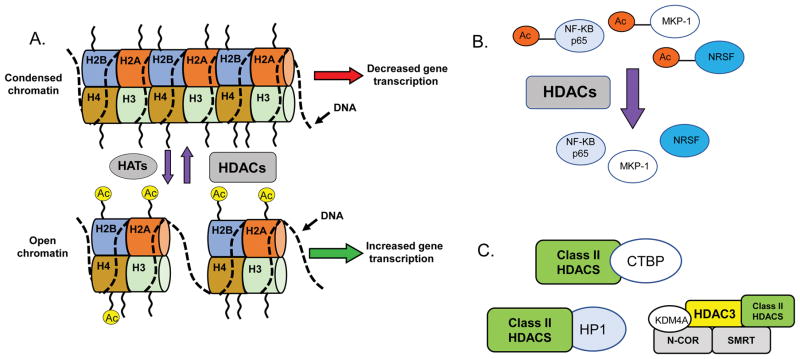Figure 1.
Different mechanisms of actions for HDAC proteins. A. Traditional effects of HDAC to alter histone acetylation and chromatin structure leading to changes in gene transcription. B. HDACs can also deacetylate non-histone proteins including transcription factors, such as Nuclear factor-kappa beta (NF-KB), Mitogen-activated protein kinase phosphatase 1 (MKP-1) and Neural-restrictive silencer factor (NRSF), among others. C. Examples of interactions of class II HDACs with regulatory proteins, including Heterochromatin protein 1 (HP1) and C-terminal-binding protein (CTBP). Class II HDACs, such as HDAC4 and HDAC5, can also interaction with class I HDACs, such as HDAC3, as part of transcriptional regulatory complexes. The nuclear receptor co-repressor 2/ silencing mediator for retinoid and thyroid hormone receptors (N-Cor/SMRT) complex is shown as an example.

